At USF, the practice of retaining high performing employees includes building strong working relationships between supervisors and employees. One of the aspects of creating these professional working relationships includes the performance management process. When performance management is completed as an ongoing dialogue between the supervisor and the employee, the results can be engaged, focused and productive employees and a thriving university.
(Video Runtime: 5 minutes) This brief video provides an introduction to performance management, including how it can impact employee engagement.
ANNUAL REVIEW TIMELINE
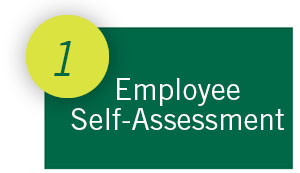
6/15-2023 - 7/15/2023
Use Performance Self-Assessment form to facilitate discussion between a supervisor and an employee.
Employees should document accomplishments, reflect on major projects or events that may have impacted performance, and develop ideas for growth and professional development.
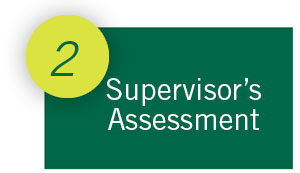
7/15/2023 - 8/1/2023
Supervisors take employees' self-assessments into consideration when completing reviews. Use either the Administrative or Staff Performance Evaluation form to do the following:
- Rate each goal and add comments.
- Rate each indicator and add comments.
- Enter goals and objectives for the next year.
Consider using examples from the Administration and Staff Performance Rating Guides to arrive at consistent ratings.
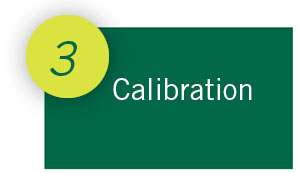
8/1/2023 - 8/15/2023
Performance management calibration sessions to enable leaders to apply similar standards to each of their direct reports to ensure everyone in the department is ranked on the same scale. Calibrations can be done not only by department but also by employee level or job function.
Performance Calibration Sessions
After the employee performance appraisals are completed, a performance review calibration meeting is set up with managers, senior leadership, and an HR representative as a facilitator.
This group reviews the employee appraisals and performance ratings to ensure that everybody was measured using the same standards. At this point, it may become apparent that some managers assess employees as high performers while others assess employees who perform to the same standards as average. Participants engage in discussions to adjust individual ratings as necessary to align with standards and to ensure that ratings are given accurately and consistently.
Additional Tips:
- Make sure that managers have completed the performance appraisal and have assigned a rating before the meeting.
- Limit the number of people in calibration meetings so leadership can reach consensus faster and the meeting doesn’t run too long.
- Make sure to include leadership from each department or group so they can represent the exact type of work or metrics that are expected for roles that fall under their department. For example, a VP of Engineering would not have the background necessary to appraise the work of a sales team.
- Break up departments into smaller groups if needed
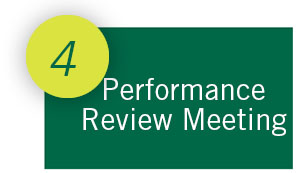
8/15/2023 - 9/1/2023
Supervisors can initiate annual performance review meetings after unit calibration sessions are completed.
Important Merit Award/Bonus Pay 9/15/2023 Deadline: By 9/1/2023, begin generating information on a spreadsheet to submit by 9/15/2023 deadline. See the Classification & Compensation guidelines here.
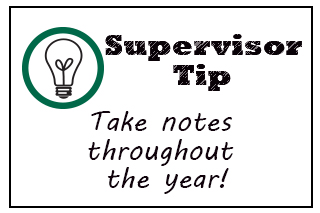
Why is it important to take notes throughout the year?
- Helps when looking for trends over time
- Reduces biases such as:
- Primacy Bias or Recency Bias - when we remember the earliest or latest moments in greatest detail.
- Horns or Halo Bias - makes it harder to be objective the more we like or dislike a person.
- Provides backup if action is needed
- Provides a reference throughout the annual review meeting
STAGES OF THE PERFORMANCE MANAGEMENT CYCLE
1. Performance Planning for the Year Ahead
- Clarify the expectations and standards for the job.
- What's expected of someone in this role? What standards must be maintained?
- Set performance goals: What will the employee strive to achieve in the coming year?
- Set development goals: What knowledge/skills will the employee work to develop or enhance in the coming year?
Tips for Performance Planning for the Year Ahead & Clarifying Expectations
ASSIGNMENTS AND POSITION DESCRIPTIONS
The employee and supervisor need to have a shared understanding of how well the employee
is doing. For this, duties and responsibilities must be clarified to provide a framework.
The first step in clarifying understanding of the job is to make sure the position
description is accurate and up to date. The employee should see a copy of the position
description and have an opportunity to ask any questions. Keep in mind that the same
job title will likely have different duties from one department to another.
USF'S STRATEGIC PLAN
Employees at USF should be familiar with the Strategic Plan and understand how their
role supports and contributes to the University's mission and goals. Employees and supervisors should review the information well in advance to ensure
that employee and departmental goals strategically align.
SAMPLE RUBRICS
You can find a set of sample rubrics below. These are just examples; supervisors may
wish to create their own more specific rubrics. Ideally, employees would be able to
access rubrics at any time during the cycle to see examples of what success looks
like.
FOR SUPERVISORS: USE SMART GOALS
How do you know if goals are being met? Set specific achievement markers by using
SMART goals. Access a one-page example here or view the online LinkedIn Learning video, Setting Team and Employee Goals using SMART Methodology (Total run time: 55 minutes).
- Need help accessing LinkedIn Learning videos? Learn about free USF employee access here.
2. Daily Coaching & Feedback
Discuss performance often. Effective coaching occurs through conversations. These conversations occur regularly, rather than being reserved for formal reviews. Share feedback about the employee's successes and areas needing improvement. Discuss training needs as they arise. The conversation should be back and forth; seek employee input about the work process and results.
Tips for Daily Coaching & Feedback
Keep conversations balanced to address strengths as well as concerns. For example:
- How is the employee doing handling their workload?
- Does the employee need help or motivation?
- Is there something done well that can be recognized?
Provide appreciative feedback and recognize successes. Pay attention between conversations to catch people in the act of doing great work. Thank people in person and attach praise to meaningful results. Instead of just good job, try, the solution you offered helped us to avoid a potential problem and exceeded the client’s expectation.
Address concerns and solve problems. Be timely and address concerns as the needs arise, but only address a manageable number of concerns at one time. When addressing problems with the employee’s performance:
- Be specific and give examples
- Focus on observable actions and their impact
- Focus on problem resolution rather than blame
- Collaborate to accurately define the problem and brainstorm solutions
- Present your view of the problem. If the problem is a concern you have about the employee’s actions, consider the Action- Impact format to present your concern.
Action-Impact Format
Conversation steps when addressing performance concerns or problems:
- State the action (behavior) you observed.
- Describe the impact the action had on results.
- Invite and hear the other’s view of the problem.
- Listen non-defensively and seek to understand the other’s perspective.
- Identify a definition of the problem that is agreeable to both of you.
- Brainstorm possible solutions.
- Agree on a strategy to implement.
- Schedule a follow-up meeting to check the success of the strategy.
3. Quarterly Performance Check-In
- Are short term objectives being met to indicate that goals will be achieved?
- Are expectations still clear? Review or clarify any standards not being met.
Tips for the Quarterly Performance Review
The quarterly check-in is a “progress check” conversation at least once per quarter to review goals, progress and results. It is time to acknowledge successes and identify improvement opportunities. The following should be considered in the quarterly check-in:
- Is the employee meeting expectations and standards?
- Is the employee achieving performance goals?
- Is the employee achieving developmental goals?
If any areas cause concern, make mid-course adjustments where needed and review or clarify any standards not being met.
- What changes would enhance performance or progress toward the goal?
- Are expectations still clear?
The quarterly check-in should be scheduled ahead of time, allowing both the employee and supervisor time to gather all necessary information. It may be helpful to have the employee complete a self-report before the meeting.
4. Formal Performance Review
- Meet annually to review and document feedback from the previous year.
- Were performance goals achieved?
- Were professional development goals achieved?
- This segues into performance planning for the next year.
Tips for the Formal Performance Review
During annual performance reviews, supervisors and employees work together to:
- Review the employee’s work achievements and challenges over the past year.
- Establish work expectations and performance goals for the coming year.
- Define the employee’s professional development goals and learning plan for the coming year.
The forms utilized in this process will assist supervisors and employees in preparing for performance review discussions. Although these forms are helpful and necessary tools, the filling out of forms is not the primary goal of a review. Reviews are most effective when forms are used to help prepare for a conversation and document the outcomes, rather than as a substitute for the conversation.
Preparing for the Formal Review
Review the following:
- The employee’s position description (PD)
- Standards and expectations
- Past year’s goals and objectives
- Other documentation gathered during the review period
Ask the employee to prepare by reflecting on the following:
- Successes and challenges over the past year
- Additional support he or she would like from you
- Additional skills/knowledge he or she would like to develop or enhance
Complete an Evaluation Form. Be prepared to share your perceptions and feedback about the employee’s performance over the past year, including:
- Key achievements and successes
- Performance concerns and/or challenges
- Changes and enhancements that you recommend (or require)
- Learning opportunities relevant to the employee’s job function that would help enhance current skills or develop new ones
- Key employee strengths and contributions over the past review period
Conducting the Review
- Share your feedback about the employee’s performance, including information about strengths and successes as well as areas needing improvement.
- If assigning ratings, communicate the rating you’ve assigned for each of the performance indicators. Provide rationale for each rating - include behavioral examples whenever a rating is above or below “achieves.”
- Invite and listen to the employee’s assessment of his/her performance. Ask the employee to share his/her feedback for you, including ideas for improvement.
- Re-enter the performance planning phase for the following year.
USF'S STRATEGIC PLAN
Remember that University success depends on the success of each and every employee. Ensure that employee and departmental goals align with USF's Strategic plan, and aim to socialize the Strategic Plan throughout daily work life.
UNIVERSITY SPECIFIC CONSIDERATIONS
Types of Performance Reviews
USF has three types of performance reviews:
- Annual
- Probationary
- Special
Evaluation Dates
Dates of annual performance reviews differ by department. Some departments choose to go by the fiscal year, while others go by anniversary dates. Several areas have designated annual common performance evaluation dates. Check with your department to see what date or timing system is used.
Probationary Employees
For probationary employees procedures, click here. Additional information and procedures can be found in the Staff Performance Management Procedure and in the Staff Progressive Discipline Procedure.
Performance Improvement Plan (PIP)
A Staff employee with a substandard evaluation will be put on a Performance Improvement Plan, abbreviated as PIP. Administration employees receive an action plan for improving performance and ONE performance evaluation either at start or end of improvement period.
The Performance Improvement Plan is a document to fill out laying out the standards and expectations based on the duties, responsibilities and requirements of the position that must be met to obtain an overall "Achieves" rating. See the Performance Improvement Plan format here.
After the PIP is completed, the employee will have another evaluation. Supervisors should work with their Service Center HR Manager, as the HR manager will send a letter outlining the Performance Improvement Plan process. In turn, supervisors need to send weekly or biweekly updates to their Service Center HR Manager.
An improvement period needs to be implemented for no less than 60 calendar days from the date that the employee received the Performance Improvement Plan. Additional time can be requested for up to a total of six months from the date of the PIP.
At the end of the period, a follow-up Special Evaluation is completed and:
- Rating revised upwards or
- Extension of improvement period requested or
- If no improvement, employee's dismissal proposed
- An employee can also be demoted to another job instead of terminated
Collective Bargaining Agreements (CBAs)
Collective Bargaining Agreements should be thoroughly considered during the performance management process. For example, a CBA may make provisions for an employee who does not meet performance standards. Each union has their own agreement; review the most up-to-date agreements online via the Central Human Resources - Collective Bargaining and Labor Relations site.
Employee Relations
Employee Relations(ER) provides education, training, mentoring and guidance to individual employees, supervisors, managers and administrators to address questions and workplace issues for non-Faculty employees.
HR Managers work with department administrators and individual employees on effective employee-manager communications and provide individual coaching to improve employee performance and resolve conflicts and problems before the point of formal corrective action and grievance.
HR Managers advise on and interpret University policies, procedures, regulations, labor contracts, key state statutes and federal laws, and oversee the University layoff, progressive discipline, performance improvement plan, and non-reappointment processes.
Employee Relations services include:
- Performance management
- Complaint resolution and conflict mediation
- Counseling and formal discipline
- Collective bargaining agreement compliance
- Grievance procedures
- Applicable alcohol/drug testing (pre-employment and regulatory)